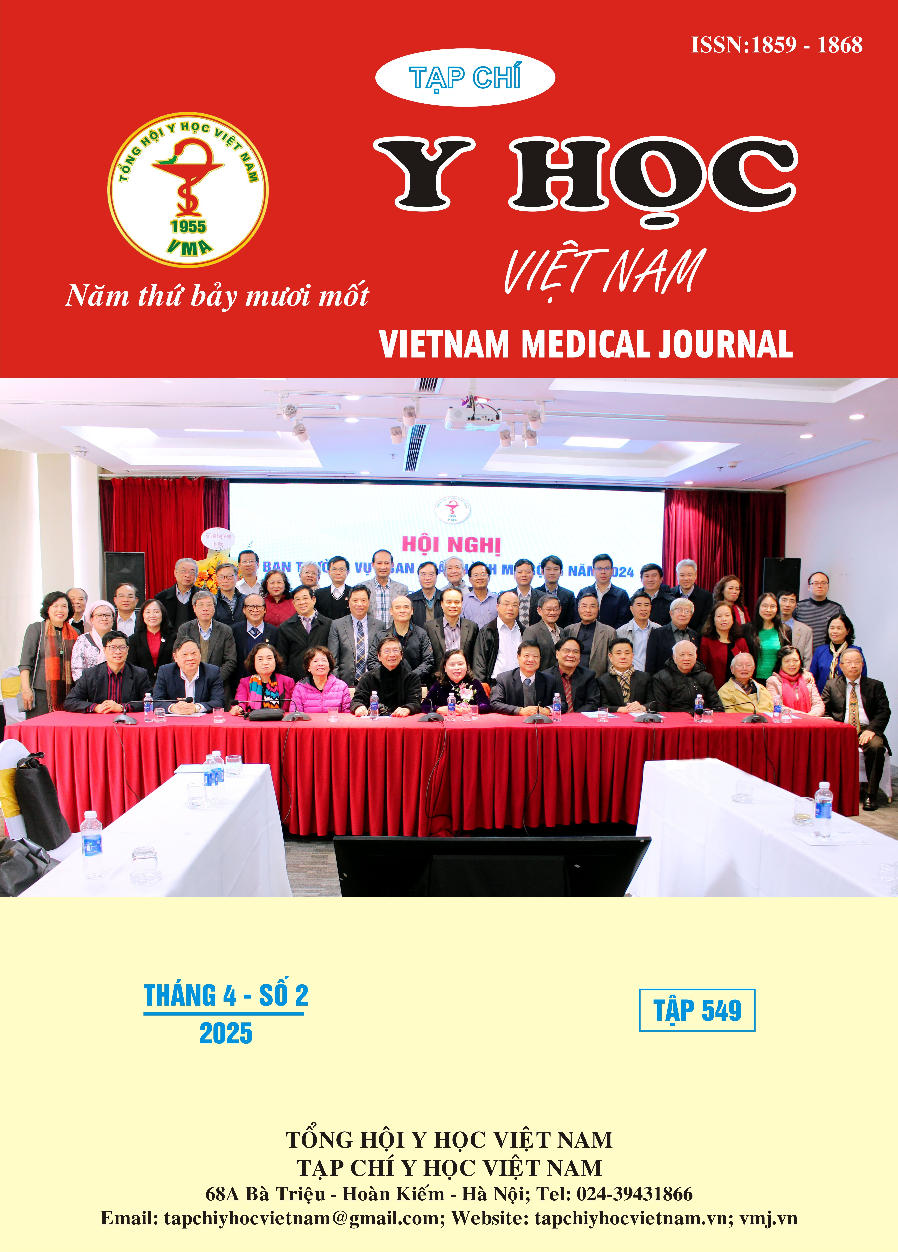EVALUATION OF TREATMENT OUTCOMES FOR EARLY-STAGE ESOPHAGEAL SQUAMOUS CELL CARCINOMA USING ENDOSCOPIC SUBMUCOSAL DISSECTION
Main Article Content
Abstract
Objective: To evaluate the efficacy and safety of endoscopic submucosal dissection (ESD) in the treatment of early-stage esophageal squamous cell carcinoma. Subject and Method: A retrospective and prospective descriptive study was conducted on 44 patients with early-stage esophageal squamous cell carcinoma who underwent ESD at the 108 Military Central Hospital, from March 2023 to December 2024. Patients were followed up at 3 and 6 months post-intervention, with endoscopic assessments of scar healing, recurrence, and post-procedural complications. Results: The study included 41 patients with a mean age of 60.09 ± 7.93 years, 100% patients were male. The mean lesion size was 26.35 ± 11.77 mm, with 88.64% of patients having a single lesion, predominantly located in the middle third of the esophagus (55.10%). Most lesions were classified as type 0-IIb (93.88%), with a majority of type B1 patterns (63.27%). The mean ESD procedure duration was 62.16 ± 19.63 minutes. The resection was 100% en bloc, with negative basal margins and negative lateral margins in 97.73% of cases. Procedural complications included pneumoperitoneum (2.27%), with no cases of perforation, bleeding, or infection. of patients upon follow-up. At the 3- and 6-month follow-ups, 3 cases (6.82%) have esophageal stenosis, while complete scar healing was observed in 100% of patients, with no recurrence reported. Conclusion: ESD is an effective and safe intervention for the treatment of dysplasia lesions and early-stage esophageal cancer, demonstrating favorable outcomes with minimal complications.
Article Details
Keywords
early esophageal cancer, high-grade squamous epithelial dysplasia, endoscopic submucosal dissection
References
2. Umar SB, Fleischer DE (2008). Esophageal cancer: epidemiology, pathogenesis and prevention. Nature Clinical Practice Gastroenterology & Hepatology, 5:517-526.
3. Noordzij IC, Curvers WL, Schoon EJ (2019). Endoscopic resection for early esophageal carcinoma. Journal of Thoracic Disease:S713-S722.
4. Lee Ching-Tai, Chang Chi-Yang, Tai Chi-Ming et al (2012). Endoscopic submucosal dissection for early esophageal neoplasia: A single center experience in South Taiwan. Journal of the Formosan Medical Association, 111:132-139.
5. Trương Văn Phong (2023). Nghiên cứu đặc điểm lâm sàng, nội soi, mô bệnh học của tổn thương loạn sản và ung thư thực quản tế bào vảy giai đoạn sớm, Luận văn Thạc sĩ y học, Đại học Y Hà Nội.
6. Lee Hyun Deok, Chung Hyunsoo, Kwak Yoonjin et al (2020). Endoscopic Submucosal Dissection Versus Surgery for Superficial Esophageal Squamous Cell Carcinoma: A Propensity Score-Matched Survival Analysis. Clinical and Translational Gastroenterology, 11:e00193.
7. Li Jun, Shen Xiangguo, Geng Yangyang et al (2021). Demarcation of early esophageal squamous cell carcinoma during endoscopic submucosal dissection: A comparison study between Lugol's iodine staining and narrow-band imaging. Medicine, 100:e27760.
8. Urabe Yuji, Hiyama Toru, Tanaka Shinji et al (2011). Advantages of endoscopic submucosal dissection versus endoscopic oblique aspiration mucosectomy for superficial esophageal tumors. Journal of Gastroenterology and Hepatology, 26:275-280.
9. Kataoka Y., Tsuji Y., Sakaguchi Y. et al (2016). Bleeding after endoscopic submucosal dissection: Risk factors and preventive methods. World journal of gastroenterology, 22:5927-5935.
10. Doumbe-Mandengue P., Pellat A., Terris B. et al (2022). Endoscopic submucosal dissection for early esophagogastric junction adenocarcinomas: a systematic review. Annals of gastroenterology, 35:351-361.


